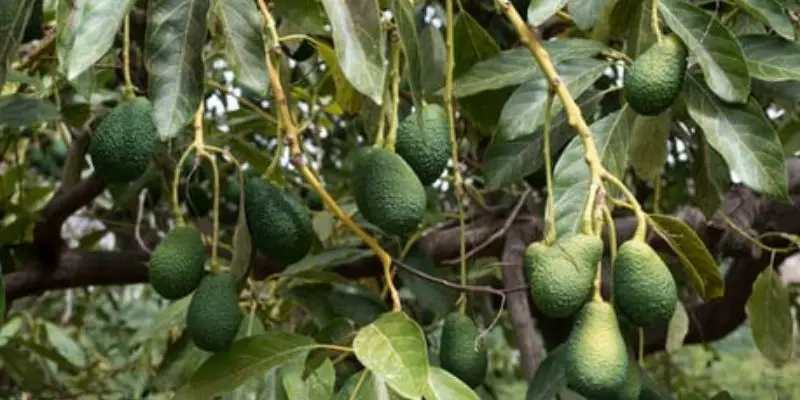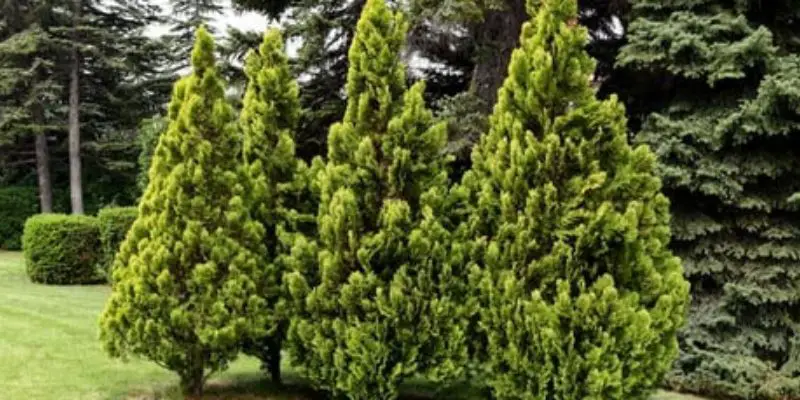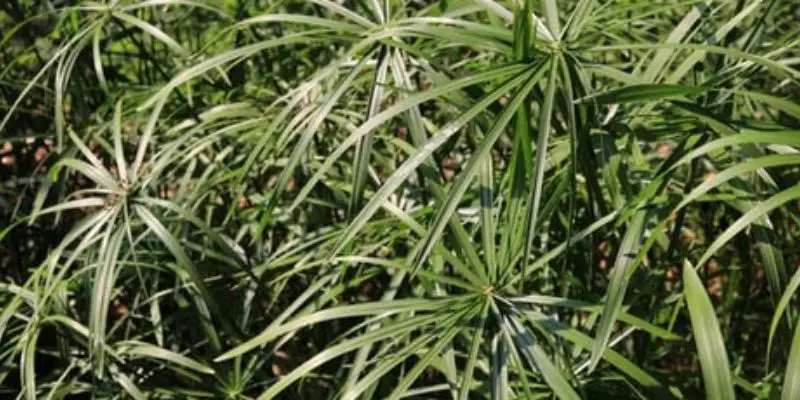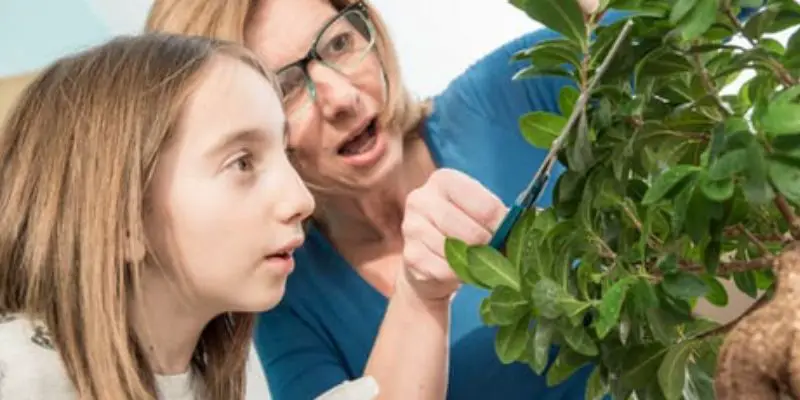Avocado trees produce delicious vitamin-rich fruit, making them a popular backyard plant especially in warm climates. However, without attentive pruning they grow into disorderly tangled beasts. Learning the basics behind how to prune avocado plants encourages health, productive growth, and easier harvesting.
This in-depth pruning guide covers all the key details both amateur and seasoned gardeners need to skillfully trim avocado trees. You’ll learn ideal timing, the right pruning tools, which branches to remove, post-pruning care, and pro tips to boost fruit yields through careful cutting. Soon you’ll have an avocado tree that is shapely, high-yielding, and simple to harvest from even as it matures.
Understanding Avocado Tree Varieties and Their Pruning Considerations
All avocado trees are not the same when it comes to pruning needs. Different cultivars with different growth patterns and unique fruit characteristics may require specific pruning strategies.
Hass Avocado Trees: A Commercial Favourite
The popular Hass avocado is cherished for its smooth, tasty flesh and skin that is easy to remove. Hass trees have a more upright, columnar growth style which can reach between 30-40 feet in height. When it comes to avocados of the Hass type, pruning should concentrate on developing a strong central column and increasing lateral branching to accommodate high fruit load.
Fuerte Avocado: A Versatile Option
Fuerte avocados have thin, smooth skins and rich buttery tastes. These trees have spreading open-growth forms that often exceed 40-50 feet tall. Pruning of Fuerte avocado should aim at having a well-separated balanced scaffold of primary branches so that fruits are distributed evenly throughout.
Reed Avocado: A Late-Bearing Delight
Reed avocados have large sizes, creamy textures, and late-season harvesting periods. If unpruned, Reed trees can grow as high as 50-60 feet. Prudent pruning must be employed to bring down tree heights while promoting branch development laterally thereby enabling accessibility when harvesting fruits.
Dwarf and Semi-Dwarf Avocado Cultivars:
It is an alternative for gardeners with limited space to plant dwarf or semi-dwarf avocado trees. Such one as Littlecado and Wurtz are small plants, which usually do not exceed 15-25 feet in height. The main goal of pruning dwarf avocados is to make them remain small through frequent thinning cuts.
It is important to understand how different avocado cultivars grow to be able to develop a good pruning plan that will help ensure tree health and increased yields. You may need to adjust your approach according to the variety of your avocado so as not only to let it thrive but also to maintain your farm’s productivity over time.
Pruning Considerations and Growth Patterns of Avocado Trees
When you prune an avocado tree, it is essential that you know its natural growth habits and branch structure well enough. By doing this, you will be able to select particular branches on the tree for strategic cuts that will improve its form when producing fruits by allowing more sunlight inside.
Avocado Tree Branching
Avocado plants have a typical branch pattern where a central leader shoot arises from the trunk with other lateral shoots branching off from this main shoot. These laterals become scaffold branches as the tree ages carrying heavy fruit loads. Pruning aims to shape and maintain this scaffolding structure, ensuring the tree remains structurally sound and productive.
Apical Dominance and Pruning
Like most trees, avocados exhibit a phenomenon called apical dominance, whereby the topmost bud (apical meristem) influences the development of lateral buds. If left unattended, this dominance results in a top-heavy tree architecture. These include pruning the central leader and selectively thinning out competing vertical shoots to encourage even more dispersion over a laterally oriented framework which will be evenly distributed.
When to Prune an Avocado Tree
As with most fruit-bearing plants, timing is key when learning how to prune avocado plants correctly. Cutting branches at the wrong time of year interferes with the delicate flowering and fruiting cycle.
The optimal time to prune avocado trees is late winter. Prune immediately after harvesting the crop, before warm weather arrives. Alternatively, prune in early spring before new growth emerges.
Aim to prune avocado trees during their natural dormant season for the most vigorous regrowth afterwards. Cutting during dormancy also helps prevent disease or damage from severe sap bleeding.
Late winter pruning prior to the avocado bloom season ensures you remove wood without sacrificing potential yield for next harvest.
Tools for Pruning Avocado Trees
In addition to timing, using the proper pruning tools prevents damage that invites disease when learning how to prune avocado plants. Investing in quality tools designed for cutting woody branches makes pruning easier and safer.
Here are the most essential tools for pruning avocado trees:
- Bypass hand pruners – Sturdy hand pruners snip smaller stems up to 1⁄2 inch diameter. Choose quality pruners that retain sharp cutting edges through repeated use.
- Loppers – Long handled loppers cut branches up to 11⁄2 inches thick. Look for gear mechanisms that increase leverage for easy cutting.
- Folding saw – A compact folding saw tackles thicker branches a lopper cannot handle. The thin razor-sharp teeth cut effortlessly through wood.
- Pole saw or pruner – Pole pruners allow cutting hard to reach top branches from the safety of the ground. Some feature saws, while other models have pruner or shear heads.
- Chainsaw – For managing massive mature trees, chainsaws make quick work of overly thick branches. Use extreme caution when handling dangerous motorized blades.
How to Prune Avocado Plant Step by Step
Understanding exactly how and where to make cuts is imperative when learning proper techniques for how to prune avocado plants. Follow these guidelines to encourage tree health and robust fruit production:
- Remove broken, damaged, or diseased branches – Get rid of branches with cracks, decay, or signs of infection to prevent disease spread.
- Eliminate inward facing branches – Cut branches rubbing together or growing toward the tree center which blocks sunlight penetration.
- Thin dense interior growth – Remove congested inward shoots to allow better airflow and light exposure for ripening fruit.
- Shorten lanky vertical branches to encourage horizontal side shoots along a sturdy scaffolding structure.
- Use thinning cuts which remove an entire branch back to the trunk or main lateral branch to reduce crown density.
With attentive structural pruning, remove up to one-fifth of the total foliage and branches annually. Take care not to over prune young trees only establishing their shape and fruiting scaffold.
Transitioning Young Avocado Trees to Mature Pruning Regimes
Pruning requirements for avocado trees change when they become mature bearing plants from young newly planted ones. Understanding appropriate techniques for every growth phase is important in guiding your tree’s form, structure, and fruit production so that it produces optimal outcomes.
Formative Pruning for Young Avocado
Trees In the first few years after planting, young avocado trees require formative pruning to establish a strong, well-spaced scaffold of primary branches. This involves:
- Selecting 3-5 primary scaffold limbs spaced evenly around the trunk
- Shortening the central leader to encourage lateral branching
- Removing any competing vertical shoots or suckers
- Thinning out crowded interior growth to allow light penetration
Keep up this structural pruning pattern every year, making sure not to remove more than a fifth of the total canopy at one time so that you do not stunt its growth.
How to Prune Avocado Plant – Transitioning to Mature Avocado Tree Pruning
As the avocado tree approaches full size, typically around 5-7 years old, the focus of pruning shifts from formative to maintenance. At this stage, you’ll want to:
- Prune to maintain the established scaffold structure
- Selectively thin interior branches to improve airflow and light penetration
- Manage tree height by shortening terminal leaders and upper branches
- Remove any dead, damaged, or diseased wood to prevent the spread of problems
Avoid drastic height reductions or extensive canopy thinning since it can stress the tree and reduce fruit production.
Rejuvenating Neglected Avocado Trees
In some cases, you may have an avocado tree left for years without being attended to resulting in disheveled overgrown. This entails a more aggressive form of rejuvenation pruning.
- To commence, get rid of all dead wood, damaged ones, and those having disease
- Choose 3-5 well-spaced scaffolds that are healthy as the primary limbs
- Shorten the branch parts that are too tall to encourage lateral development
- For increased light and air movement within the plant thin crowd interiors of growth
- The initial year should involve eliminating a maximum of 30% canopy cover then proceed with subsequent maintenance pruning.
In this case, one needs to exercise patience since it may take several years before any neglected avocado tree can completely recover and resume dependable fruiting again.
By adjusting your pruning approach based on the age of the avocado tree, you can make it grow through different stages and eventually develop into a long long-lasting high-yielding specimen that will reward you with many flavorsome fruits.
Rejuvenating Overgrown Avocado Trees
In addition to annual light pruning, occasional extensive corrective pruning rejuvenates neglected avocado trees. Severe hacking stimulates vigorous new growth improving both tree shape and fruiting potential.
Follow this straightforward 4-step approach when rehabilitating an overgrown avocado tree:
- Remove inward growing branches, dense shoots, and diseased wood.
- Select 3-5 well-spaced main lateral branches as primary scaffolding. Shorten overly long branches.
- Thin remaining interior branches allowing light to penetrate the canopy.
- Trim the overall tree height if excessively tall. Remove old unproductive wood to stimulate new fruiting branches.
This systematic renovation pruning transforms an oppressively overgrown tangle into an orderly, high-yielding avocado tree. Take care removing no more than 30% of total growth at one time to prevent damaging tree health.
Troubleshooting Common Avocado Pruning Issues
Sometimes even experienced avocado growers face challenges when doing so. Understanding these problems will assist in maintaining the health and productivity of your farm.
Sunburn and Sunscald
The over-pruning especially in the upper canopy can leave inner branches unshielded by bark subjected to direct sunlight thus causing sunburns. Look out for symptoms such as discoloration, flaking, peeling, or splits in the bark and diebacks on the tree. Hence, on any cut surfaces apply diluted white latex paint or horticultural wax and also maintain an adequate tree interior shade.
Excessive Suckering
Vigorous avocado trees tend to produce an abundance of vertical suckers, especially after heavy pruning. These shoots may grow straight up quickly enough to become disruptive in form growing towards a main branch thereby denying it water supplies and other resources that it needs. When found, cut them off at their base points where they originate from as well as consider modifying the amount of fertilizer used to deter excessive vegetative growth.
Delayed Wound Healing
Avocado trees can be slow to seal pruning cuts, leaving them vulnerable to pest infestations and disease. This is particularly problematic for larger branches. Prune soon after applying a thin layer of pruning sealer or wound paste to quicken its healing process besides sustaining proper nutrition throughout this time accompanied by deep watering.
Frost Damage and Dieback
In regions prone to cold snaps or frost, avocado trees may suffer damage to their new growth and branch tips following pruning. To avoid exposing new vulnerable growth to cold, adjust your pruning schedule as needed. Look out for symptoms of frost damage like wilting, discoloration, and dieback, and cut away any impacted wood.
Disease Infestations By Pests
Pruning scars can at times serve as a source of attraction for insects or an entry point of pathogens that may result in additional tree health matters. Between cuts thoroughly inspect your tools and sanitize them to curb disease spread. Monitor for indications of insect attack or fungal diseases whilst treating with appropriate cultural or chemical controls promptly.
By being vigilant and taking proactive measures to mitigate these possible challenges, you can ensure that your avocado trees bounce back after pruning efforts are made and continue to thrive for generations.
Safety Considerations for Pruning Avocado Trees
Pruning avocado trees particularly those that are fully grown requires a lot of physical effort, hence one must observe safety measures. If ignored this may cause serious injuries or even lead to death. It is very important if you are an experienced avocado farmer that you consider workers’ safety first before anything else.
Personal Protective Equipment (PPE)
If you are going to trim an avocado tree, you have to put on the right personal protective equipment (PPE). Some of these include:
- Tough hand gloves that can protect your hands from cuts and scratches
- Safety glasses or goggles for eye protection from flying objects.
- Hard hat or helmet to prevent falling branches.
- Non-slip hard steel-toed boots for preventing foot injuries.
- Hearing protection such as ear muffs or plugs when using power tools
Ladder and Elevated Work
Trees of avocados often go up high and therefore require ladders or elevated work platforms. Always ensure that every piece of equipment is in good condition and well-secured before ascending. At all times, make sure there are three points of contact maintained with the ladder’s parts. Purchase a light pole saw that can be adjusted while the ladder time use is minimized.
Chainsaw and Power Tool Precautions
When dealing with larger branches, chainsaws, and other power tools become useful since they are essential. You should know how to start, operate, and maintain any motorized tool correctly. Keep off from the blade, and stand firmly on your feet so as not to get injured by it in return. Chainsaws should not be used when anyone is on top of a ladder or high platform.
Proper Ergonomics and Fatigue Management
The act of pruning avocado trees can be physically exhausting, causing muscle pull, aching back, and fatigue in case the right ergonomic practices are not observed. Take frequent breaks and maintain good posture while using different pruning tools at intervals. To reduce the strain on your own body, consider using ratcheting loppers or power-assisted pole saws as pruning aids.
Emergency Preparedness
Accidents can still occur despite the best efforts. Keep a well-stocked first aid kit nearby and educate all employees about basic emergency response procedures. Know where to find the nearest emergency medical services and have plans for getting help quickly if necessary.
By prioritizing safety all through the pruning process, you can protect yourself, and your workers, and ensure the long-term health and productivity of your avocado orchard.
Caring for Avocado Trees After Pruning
The final aspect for properly maintaining avocado plants involves appropriate aftercare once cutting is complete. Proper follow-up keeps freshly pruned wounds healing quickly.
Here are vital aftercare tips:
- Clean pruning tools thoroughly between each cut with diluted bleach to prevent disease spread.
- Apply horticultural wax or tree wound sealing paste to any cuts wider than 1 inch.
- Water thoroughly after pruning to prevent additional stress and regularly during growing season.
- Remove cut debris around the base and compost further away to avoid transmission of decay organisms through open wounds.
- Monitor for pest infestation or infection attracted to tender new growth.
- Delay major corrective pruning every 3-4 years or so to allow adequate recovery between intensive cutting sessions.
With attentive pruning and aftercare, even neglected avocado trees make a strong comeback!
Maintaining an Optimal Tree Shape
Naturally, avocado trees tend to grow tall and spindly with crowded interiors. Henceforth proactive pruning is necessary to manage its shape and allow light and air penetration for good harvest accessibility. By strategically removing interior branches and keeping a well-spaced scaffold you can convert an unruly avocado plant into a productive high-yielding specimen.
Pruning for Increased Fruit Production
Avocado trees are alternate-bearing where they produce abundant yield one year followed by a lighter harvest next time. Through careful trimming the fruiting cycle can be altered making it to be more consistent and higher yielding.
Stimulating Flowering and Fruit Set
Avocado flowers emerge from lateral buds on one-year-old wood. Promoting the growth of strong side shoots through pruning means that there are more potential flowering sites hence allowing greater capacity for fruit formation. Thinning out congested interior growth also enhances sunlight penetration, a key factor in floral bud initiation.
Controlling Vegetative Growth
Avocado trees tend to put their energy into leafy growth instead of producing fruits. Proper pruning will strike a balance by pushing the tree’s resources toward flower and fruit development rather than excessive shoot growth. Pruning upright branches short and removing competing vertical suckers makes the plant shift attention to lateral branch expansion and fruit set.
Maintaining Optimal Fruit Load
Weighty fruit loads can lead to branch breakage and uneven ripening. Decently thinning out the fruits either through manual means or strategic pruning allows individual avocados to attain full size and quality. It also eases pressure on the tree as it discards more energy for use in remaining fruits and next year’s bud break initiations.
By synchronizing your pruning with the natural flowering tendencies of your avocado trees, you make them deliver consistently good quality yields, year in and year out.
Avocado Tree Nutrition and Its Impact on Pruning
The overall health and vitality of an avocado tree is largely dictated by its nutritional status which subsequently affects its pruning requirements as well as recovery periods. Understanding the role of essential nutrients and how to maintain optimal soil conditions can help you time and tailor your pruning efforts for maximum benefit.
Nitrogen: Promoting Vegetative Growth
Avocado plants are given nitrogen, a vital macro element that encourages their leaves and shoots to grow well. Excess nitrogen, however, may lead to an over-exuberant disorderly growth pattern that requires more frequent pruning to maintain the desired shape and structure of the trees. It’s important after heavy pruning especially for farmers to monitor levels of nitrogen as well as adjust fertilization accordingly.
Phosphorous: Supporting Root and Reproductive Health
Phosphorus is vital for root development, flowering, and fruiting in plants. Well-supplied phosphorous enables avocado trees to recover more quickly from pruning stresses hence promoting the regeneration of new growths. Appropriate amounts of phosphorous are important during the rejuvenation of heavily pruned or neglected avocado trees.
Potassium: Enhancing Drought Tolerance and Fruit Quality
Avocado trees need enough potassium in order to withstand drought and produce high quality fruits. Also through proper provision of potassium nutrition, the cell wall is made stronger increasing tree’s ability to deal with cuts from pruning. The amount of potassium is most critical in sandy or leached soils where this nutrient can be easily depleted.
Calcium plus Boron: Preventing Physiological Disorders
Calcium as well as boron influences fruit quality as well as cell wall formation. Lack of such nutrients can lead to physiological disorders like blossom-end rot and fruit drop (which are more intensified by pruning stresses). Regular monitoring of soil and leaf tissue analysis, as well as calcium and boron supplementation whenever necessary, helps in keeping the trees healthy enough to give higher returns.
Integrated Soil and Foliar Nutrition Management
To support optimal avocado tree growth and recovery after pruning, adopt a holistic approach to nutrient management. Regularly test your soil and leaf tissue for imbalances or deficiencies then develop customized fertilizer plans. On the other hand, foliar feeding strategically implemented with the inclusion of critical nutrients can correct short-term nutrient shortages for the trees to recover fast.
Aligning your pruning protocols with avocado tree-specific nutritional demands will help in maximizing their resilience thus maintaining their health leading to productivity of huge yields over many years.
Conclusion
Learning how to prune avocado plants encourages flavorful fruit yields year after year. Follow timing recommendations based on the fruiting cycle to avoid accidentally sacrificing next season’s potential harvest. Always sterilize pruning tools between each cut to curb disease contamination through dirty blades.
The onus is upon you to know how avocados should be trimmed to run your own home-based or commercial orchard proficiently. By understanding the varying nutritional requirements and growth habits of the distinct species of avocado, make sure that all your trimming efforts are directed towards supporting healthy plants producing fruits that harvest easily.
This comprehensive guide to pruning will help you change your avocado orchard into a good-looking, high-yielding demonstration from setting up the first scaffold framework in young trees to reviving neglected ones. You need to make safety your top priority, watch out for common problems, and prune at the right time of an avocado tree’s growth cycle to have many years of getting bountiful, tasty avocados.
If you have no idea about gardening or if you are an experienced grower of avocados, following the principles and strategies explained in this article will provide you with the ability and courage to trim your avocado fruit tree. Realize the potentiality of your farm and enjoy the creamy fruit produced by it.

Michael Glenn is a certified arborist and horticultural expert with over 15 years of experience in the landscape industry. His passion for plants and trees has led him to become a sought-after authority on pruning and trimming techniques. Glenn’s in-depth knowledge of proper pruning methods, timing, and tools has helped countless homeowners and professionals maintain healthy, aesthetically pleasing gardens and landscapes.
In addition to sharing his pruning expertise through practical tips, step-by-step guides, and expert advice, Glenn is also a respected author of pruning tool buying guides. His comprehensive reviews and comparisons ensure readers can make informed decisions when investing in quality loppers, pruning shears, saws, and other essential equipment. With a deep understanding of plant biology and sustainable practices, Glenn’s writing empowers audiences with the knowledge needed to properly care for green spaces.





